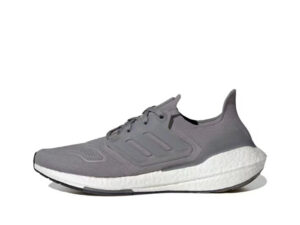Shoe design elements like padding, tongue, and collar play crucial roles in promoting comfort:
- Padding:
- Impact Absorption: Strategically placed padding, often in the midsole and heel areas, helps absorb impact during footstrike, reducing discomfort and fatigue.
- Cushioning: Padding around the collar and tongue provides a softer feel against the foot, minimizing pressure points and enhancing overall comfort.
- Tongue:
- Even Pressure Distribution: A well-designed tongue that is adequately padded and positioned helps evenly distribute pressure from the laces across the foot, preventing discomfort from tight lacing.
- Protection: The tongue acts as a barrier between the foot and the laces, reducing friction and potential irritation.
- Collar:
- Ankle Support: A padded collar provides cushioning and support around the ankle, preventing chafing and offering stability. This design element contributes to a secure yet comfortable fit.
- Lockdown Fit: A well-designed collar ensures a snug fit without causing constriction, promoting comfort without sacrificing stability.
Overall, these design elements, when thoughtfully implemented, aim to enhance comfort by reducing pressure points, offering cushioning and support, and ensuring a secure yet comfortable fit for the wearer. Additionally, the use of breathable and moisture-wicking materials in these areas can further contribute to a comfortable shoe-wearing experience.
What technology or material is used in the insole and how does it contribute to the comfort of the shoe?
The Ultra Boost 20 and similar models commonly incorporate an insole made of OrthoLite® foam technology, renowned for its contributions to comfort:
OrthoLite® Insole:
- Cushioning: OrthoLite® foam provides a cushioned layer within the shoe, offering a comfortable and responsive feel underfoot. China ULTRA BOOST22 suppliers This cushioning enhances comfort during wear, particularly during activities with repeated impact.
- Moisture Management: The open-cell structure of OrthoLite® helps wick moisture away from the foot, aiding in sweat absorption and moisture management. This feature contributes to a drier and more comfortable environment for the foot.
- Breathability: OrthoLite® foam promotes airflow within the shoe, enhancing breathability and ventilation, which can help regulate temperature and reduce discomfort caused by overheating.
- Antimicrobial Properties: Many OrthoLite® insoles incorporate an anti-microbial treatment that helps prevent the growth of odor-causing bacteria, ensuring a fresher and more hygienic environment within the shoe.
The use of OrthoLite® foam in the insole of the Ultra Boost 20 contributes significantly to the shoe’s overall comfort by providing cushioning, moisture-wicking properties, breathability, and odor control. This technology aims to optimize the wearer’s comfort throughout various activities.
